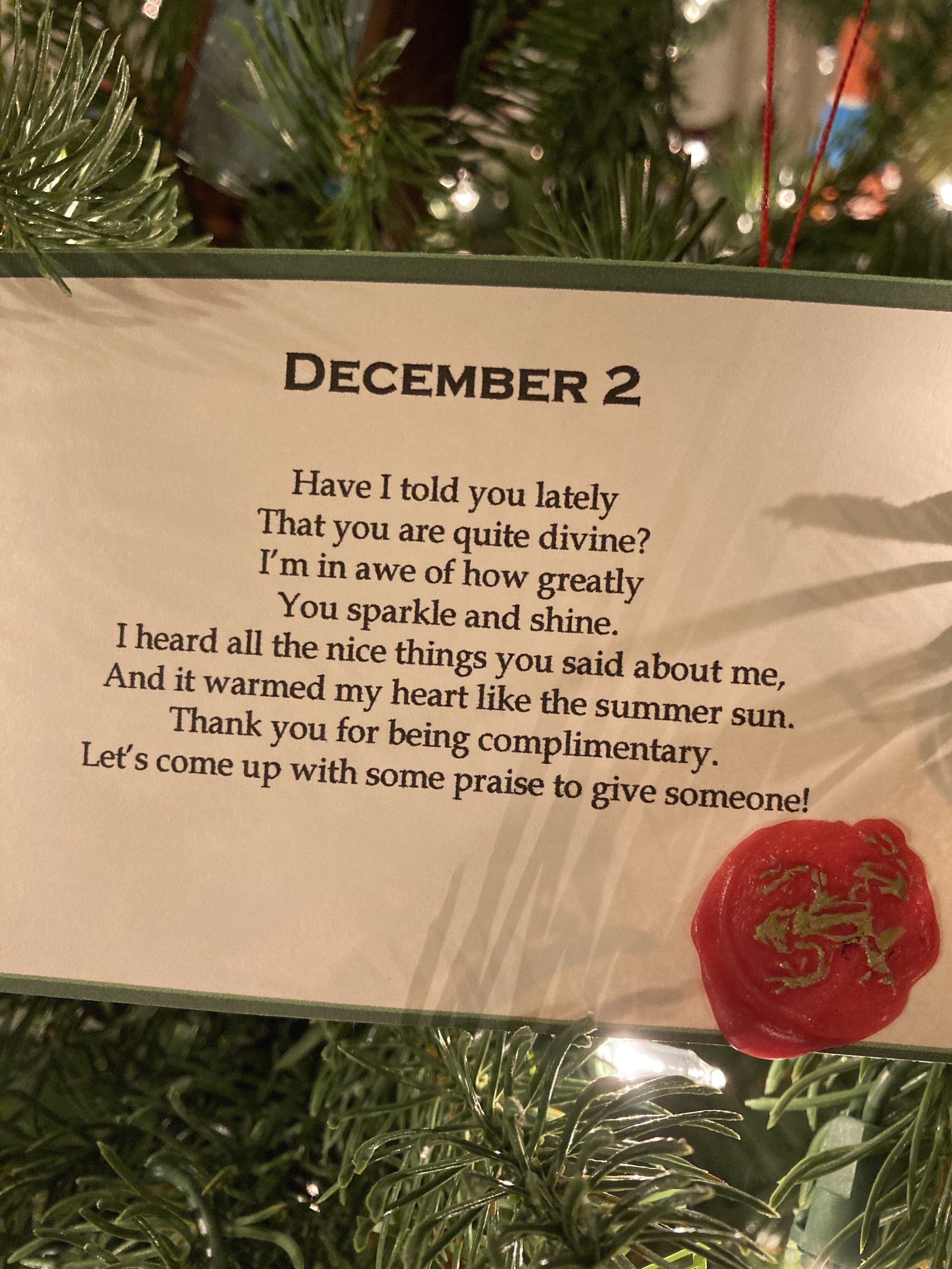Activity:
Today’s goal is to convey the importance of compliments, strategies for crafting an effective compliment, and, importantly, how to take a compliment well. In order to gamify this, I’ll be playfully passing compliments back and forth with my kids all day, with the goal of sharing our favorites from the day around the dinner table.
Rationale:
Compliments themselves are pro-social behavior and are not necessarily indicative of empathy; they could easily be motivated by the possibility of rewards (like a compliment in return). However, giving and receiving compliments lets kids practice three crucial components of empathy: positive relationship building, recognizing interpersonal similarities, and perspective-taking.
We know that people like those who compliment them, as Dale Carnegie intuited and later studies have proven (Gordon, 1996). Nevertheless, many people are hesitant to give compliments generously. A recent study on the power of compliments suggests that people vastly underestimate how positively compliments, even from strangers, will be received, and that this misperception of the value of compliments discourages people from giving them (Boothby & Bohns, 2020). Importantly, the same study also suggests that people are less likely to offer compliments because they doubt their ability to do so competently, which, let’s face it, is a reasonable fear. As anyone who has ever been made uncomfortable by a compliment knows, they aren’t all created equal, and when they go wrong, it can be disastrous. Recent studies note that Americans generally loathe compliments that reinforce positive group stereotypes (i.e. that Asians are good at math, that women are nurturing, etc.) (Siy & Cheryan, 2013), and compliments on physical appearance are fraught. Some studies have shown that American English speakers offer compliments more often than speakers of any other language, but that these compliments are generally formulaic and are often perceived as disingenuous (Luu, 2018). When we lack confidence in our ability to craft and deliver effective compliments, we sacrifice a social tool that makes both the compliment giver and receiver happier (Boothby & Bohns, 2020)—and which can foster important relationships.
In order to better utilize compliments, we need to participate in perspective-taking. The best compliments are specific, authentic, and require us to attempt to inhabit the recipient’s point-of-view. If we want to help our kids become confident compliment givers, we need to show them how to:
Identify something they genuinely like about someone
Consider why they like that thing
Tell the other person, without exaggerating
Research suggests that both children and adults are more likely to empathize with people who seem familiar and similar to themselves (Zahn-Waxler et al., 1984; Smith, 1988). While we’ll be working on recognizing similarities across differences in the coming days, the social value of a compliment makes evident a near-universal desire to feel both recognized and appreciated, and that realization alone is a valuable step in the development of empathy.
Book Recommendation:
Next to You, by Lori Haskins Houran and Sydney Hanson. This book depicts a series of cloyingly sweet pictures of baby animals and tells the reader, over and over, that those animals have nothing on them. I don’t like that this book is comparative or that it is mostly looks-based, but I love how cute and playful it is. Most importantly, I love that my kids LOVE it. Every time we read it, they are swooning by the end. We’ll be reading this today because it helps them understand how wonderful it can feel to get a compliment.



